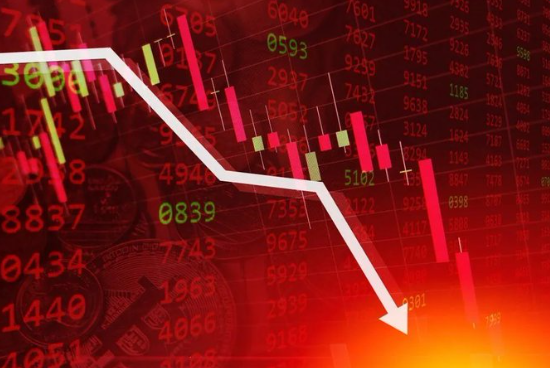The Federal Reserve is at a critical juncture, with the market watching closely to see if it can prevent a recession or if it will repeat past mistakes by failing to act in time. Chair Jerome Powell and his colleagues at the central bank face a significant challenge in determining how to navigate this turbulent economic climate. Recent volatility on Wall Street, including a relief rally on Tuesday, reflects growing recession fears.
How Chair Jerome Powell and his cohorts react likely will go a long way in determining how investors negotiate a turbulent climate.
Read the full article here:https://t.co/ua8Vs14Rr3 pic.twitter.com/7sOgLicmJL
— webainews (@webainews) August 6, 2024
Steven Blitz, chief US economist at TS Lombard, summed up the prevailing sentiment on Wall Street in a note to clients: “No recession today, but one is increasingly inevitable by year-end if the Fed fails to act. But they will, beginning with a half percentage point cut in September telegraphed in late August.”
This sentiment underscores the widespread belief that a recession is avoidable if the Fed takes decisive action. However, disappointing economic data has fueled concerns that the Fed missed an opportunity at its recent meeting to signal forthcoming rate cuts. This recalls the Fed’s previous mistake of dismissing the 2021 inflation surge as “transitory,” leading to a series of aggressive rate hikes.
With a weak jobs report from July and increasing worries about a downturn, the investing community is urging the Fed to take strong action before it’s too late. Traders are anticipating a half-point rate cut in September, followed by aggressive easing that could reduce the Fed’s short-term borrowing rate by 2.25 percentage points by the end of next year. The Fed’s current target rate is between 5.25% and 5.5%.
Citigroup economist Andrew Hollenhorst noted, “The unfortunate reality is that a range of data confirm what the rise in the unemployment rate is now prominently signaling — the US economy is at best at risk of falling into a recession and at worst already has.” Hollenhorst expects data over the next month to confirm the slowdown, making a half-point cut in September likely and an intermeeting cut possible.
💔 💵 😱 Be careful what you wish for
Wall Street is counting on the Fed to ride to the stock market’s rescue.
Bad news…the stock market is almost always down 200-300 days after the first rate cut. Not up…DOWN. https://t.co/yLMPLl5R20#Correction #BearMarket… pic.twitter.com/fdjq1AEltb
— The Sagami Letter | Tony Sagami (@anthonysagami) August 7, 2024
Despite the economy still creating jobs and stock market averages near record highs, an emergency cut before the Sept. 17-18 Federal Open Market Committee meeting seems unlikely. However, the discussion of such a cut highlights the depth of recession fears. Historically, the Fed has made emergency cuts only during extreme distress.
Michael Gapen, an economist at Bank of America, argued against an intermeeting cut, stating, “If the question is, ‘should the Fed consider an intermeeting cut now?’, we think history says, ‘no, not even close.’” Despite this, the Fed is expected to cut rates rapidly, starting potentially with Powell’s keynote policy speech at the Fed’s annual retreat in Jackson Hole, Wyoming, later this month.
Joseph LaVorgna, chief US economist at SMBC Nikko Securities, anticipates the Fed will cut rates by 3 full percentage points by the end of 2025, more aggressively than the current market outlook. “Go big or go home. The Fed has clearly said that rates are too high. Why would they be slow at removing the tightness?” LaVorgna questioned, emphasizing that quick rate cuts are necessary to correct the current rate levels.
LaVorgna also highlighted the importance of “normalizing” the inverted yield curve, where longer-dated securities yield less than shorter-dated ones, as crucial to avoiding an economic contraction. Goldman Sachs recently raised its recession forecast to 25% from 15%, noting that the Fed has significant room to cut rates if necessary and could also restart its bond-buying program known as quantitative easing.
Total global stock rout as well whisked markets see nightmare scenario US recession horrors resurface. NIkkei crashes, worst since Black Monday 1987. #Crypto plunges as risk off mood dominates. Investors head for the door.#buythedip #memecoin #tothemoon #x1000 #LFG pic.twitter.com/NcCV5ojCB6
— Cal Eater (@skwidSin) August 5, 2024
Major Points:
- The Federal Reserve is at a critical juncture, with its upcoming actions crucial in determining whether the US can avoid a recession or risk repeating past errors by not acting swiftly.
- Wall Street anticipates the Fed will implement a half-point rate cut in September, with expectations for further aggressive easing that could lower the short-term borrowing rate by 2.25 percentage points by the end of next year.
- Recent disappointing economic data and a weak July jobs report have heightened fears that the Fed missed an opportunity to signal rate cuts earlier, recalling past mistakes in handling inflation.
- An emergency rate cut before the September Federal Open Market Committee meeting is considered unlikely, though the discussion reflects deep recession fears.
- Despite ongoing job creation and high stock market levels, the Fed is expected to cut rates quickly, starting potentially with a key policy speech at the Fed’s annual retreat in Jackson Hole, Wyoming, later this month.
James Kravitz – Reprinted with permission of Whatfinger News



